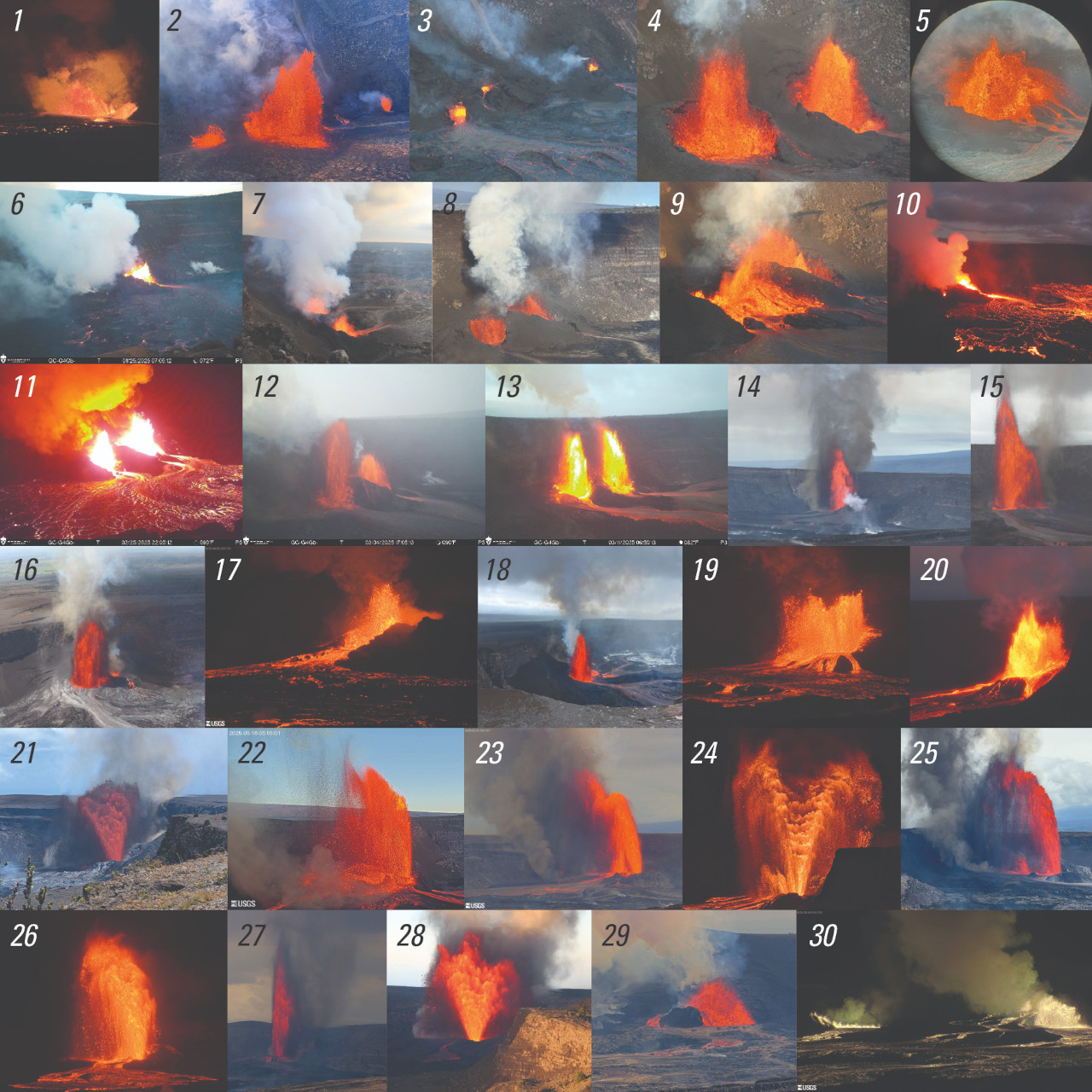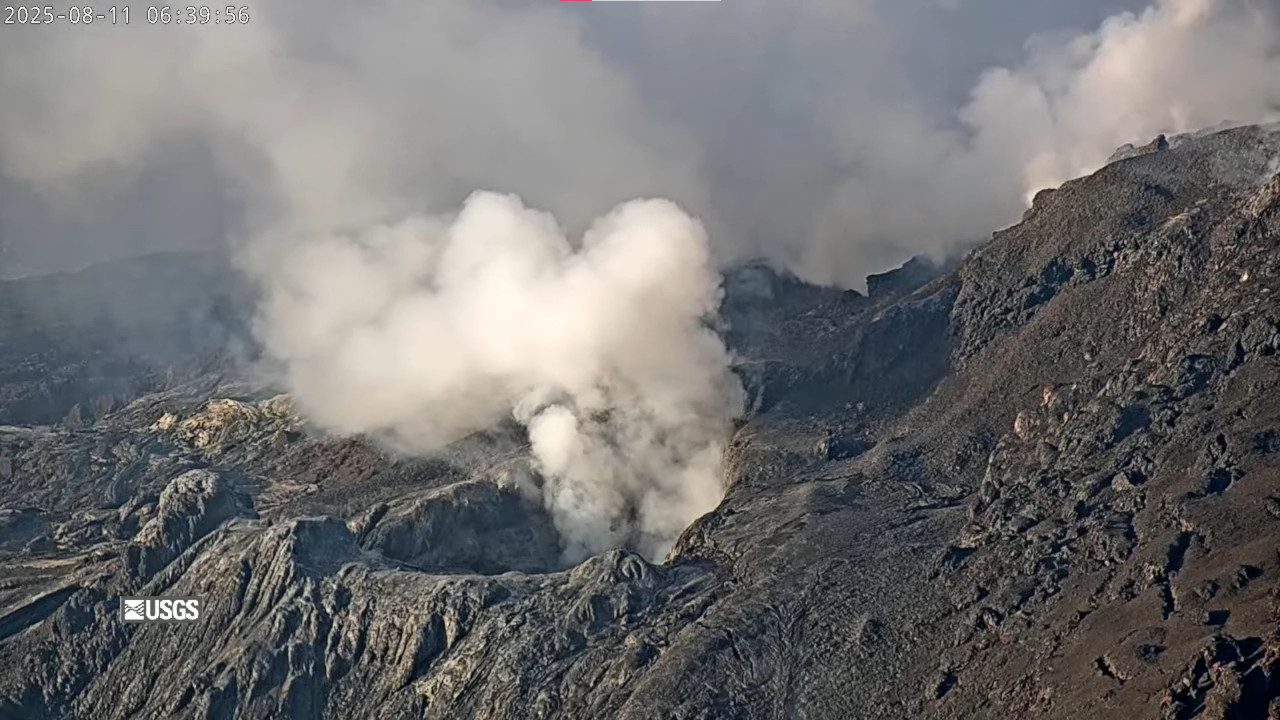(BIVN) – The ongoing eruption at the summit of Kīlauea volcano in Hawaiʻi Volcanoes National Park is paused, with the next activity expected later this week, or early next week.
“No incandescence was visible last night from either vent or the flow field,” the USGS Hawaiian Volcano Observatory reported on Sunday. “Low-frequency tremor bursts characteristic of gas pistoning of magma continue, suggesting the lack of glow may be due to lava residing deep within the vent or the vent may have developed a shallow blockage.”
The previous episode, Episode 30, occurred on August 6th and featured 12 hours of continuous fountaining. The Uēkahuna tiltmeter recorded about 22.5 microradians of deflationary tilt during the episode. Inflation began when the episode ended. Since then, the Uēkahuna tiltmeter has recorded over 10 microradians of inflationary tilt.

USGS: “Photo compilation of episodes 1–30 of the ongoing eruption at the summit of Kīlauea, including webcam imagery and photos taken by USGS Hawaiian Volcano Observatory scientists on the ground and during helicopter overflights. In all photos except for episode 7, the south vent is on the left and the north vent is on the right. For the episode 7 photo, the north vent is in the center and the south vent is below it to the right. The episode 5 photo only shows north vent. The episode 30 photo also shows a fissure on the south wall that was active in the first few hours of the episode.”
From the analysis provided by the USGS HVO on Sunday:
The lack of glow along with the large deflation during episode 30 suggest another long repose period before the onset of the next eruptive episode as was prior to episode 30. Current inflation rates remain elevated, but tend to slow during the repose period. Models show the possible onset of the next eruption either late this week to the week of August 17 depending on the model. Changes in inflation rate will affect the models. Periods of no inflation to negative inflation, as seen prior to episode 30, cannot be forecast and will delay the onset of the next episode.
The injection of a shallow dike resulted in the new southern fissure vent at the onset of episode 30. Dike emplacement in the south caldera suggests that eruptive pressure continues to increase as the vent elevation gets higher and magma can be injected into weak areas of the surrounding summit. It is possible this could result in permanent change in the vent locations and eruptive behavior. Currently, there are no indications that any eruptive activity would occur outside of the summit region. Kīlaueaʻs East Rift Zone continues to contract, indicating no magma is entering that part of the system.
The current eruption has been characterized by episodic lava fountaining not seen in any eruptions since the 1983–86 episodic fountains at the beginning of the Puʻuʻōʻō eruption. Lava fountains and flows have erupted from two vents within Halemaʻumaʻu crater that we refer to as the north vent and south vent. Each of the previous fountaining episodes lasted from a few hours to over a week and was accompanied by strong deflation of the summit region. Pauses between the fountaining episodes have been marked by an immediate switch from deflation to inflation as the magma chamber recharges and repressurizes. Fountaining episodes have occurred approximately once per week since the start of the current eruption on December 23, 2024.
HVO continues to closely monitor Kīlauea and is in contact with Hawai‘i Volcanoes National Park and the Hawai‘i County Civil Defense Agency about eruptive hazards.
The USGS Volcano Alert level for Kīlauea remains at WATCH.


by Big Island Video News7:03 am
on at
STORY SUMMARY
HAWAIʻI VOLCANOES NATIONAL PARK - Scientists say models indicate the next episode (Episode 31) could start sometime late this week or next week.